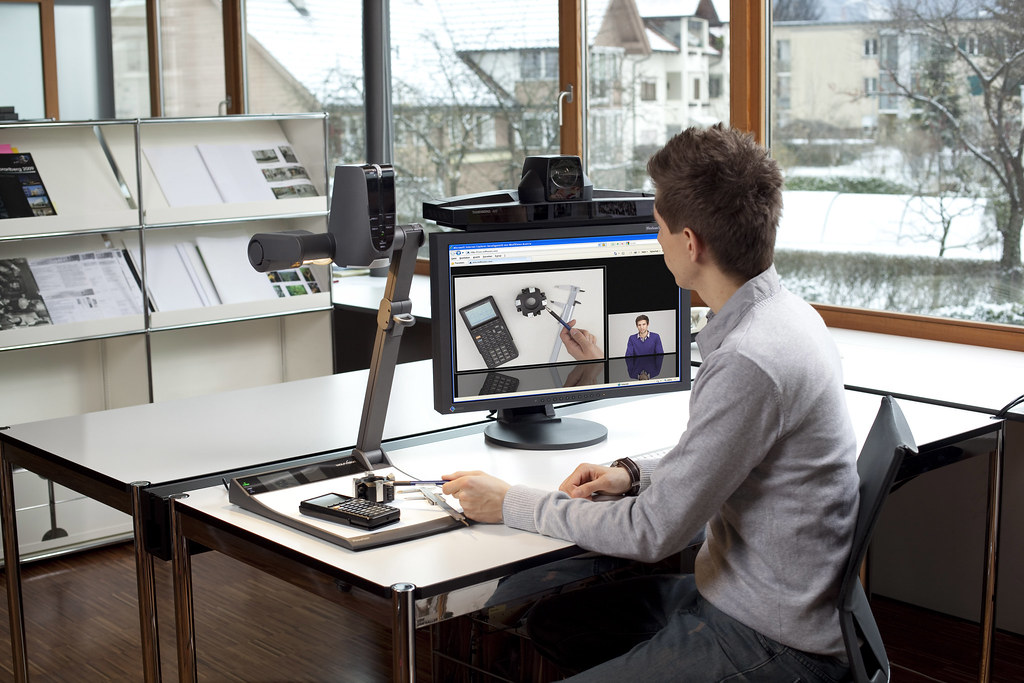Videoconferencing solutions continue to move into the commercial foreground, with videoconferencing hardware achieving pre-COVID-19 volume and value growth of 28 percent and 9 percent respectively in 2019, according to a new report from Futuresource Consulting. The report, which covers all aspects of videoconferencing hardware, combines desk research, sales data from vendors across seven key geographies, and channel interviews carried out by Futuresource in the US, France, Germany and the UK.
COVID-19 has accelerated the alignment of communication methods with videoconferencing and collaboration tools, creating opportunities for vendors operating in the sector. However, Futuresource expects this to be far more than a short-term opportunity. As employees become comfortable with their newly discovered collaboration tools and employers begin to reap the benefits, the post-COVID-19 world will continue to rely on remote communication and highly dispersed workforces.
Videoconferencing solutions occupy a range of product segments across software and hardware, namely pure cloud solutions, software-agnostic peripherals (SWAPs), room hubs, team collaboration displays, integrated codec hardware and telepresence.
Room Hubs Riding High, Dominated by the Big Three
“Room hubs are now firmly established and on track to achieve the strongest volume and revenue growth within the sector,” Adam Cox, Senior Analyst at Futuresource Consulting, said. “We expect global value to grow from $448 million USD in 2019 to $2.8 billion USD in 2024, driven by convenience and simplicity, while allowing companies to keep rooms video-ready at all times. The US leads the way in room hubs, followed by EMEA. The technology is far less pronounced in APAC, where customers are more price sensitive and reluctant to invest. Moving forward, the biggest challenge to the growth of the room hub market is the locked-in nature of room solutions, particularly at a time when users are favoring flexibility.
Strong Growth in the Americas
North and Latin America continued to display strong growth in 2019, particularly in the corporate vertical, where the region leads the way in introducing tech into smaller meeting spaces. However, there is a preference for the cheapest solution types to be installed into these spaces, which has helped the sub-$1,000 hardware category to drive the market forward. Looking to the education vertical, this continues to play a primary role in bolstering collaboration displays uptake.
Domestic Chinese Brands Dominating
China is key growth region, with its domestic brands dominating and looking for opportunities to expand export volumes. Across APAC and China combined, the corporate vertical grew by 53 percent in volume last year, predominantly fueled by China, with rapid growth in education taking place in the rest of APAC. However, the region continues to be incredibly price sensitive, and lags behind other world regions when it comes to implementing collaboration tech in small meeting rooms and huddle spaces.
EMEA Ripe for Expansion
EMEA was the slowest-growing region last year for WPS (Wireless Presentation Solutions). However, the trend towards smaller meeting rooms continues to take hold, and businesses in EMEA, particularly Western Europe, are investing in collaborative tech for these spaces. The corporate vertical has yet to fully adopt WPS collaboration displays, but the product segment is ripe for expansion, as it gains traction and will soon become a must-have feature.
The Future of Videoconferencing Solutions
“Short-term, the effects of COVID-19 have put the brakes on the market to some degree,” Cox commented, “though units shipped into both corporate and education verticals this year will still be larger than they were in 2018. Some education projects are continuing throughout 2020, but it is likely that government spending in the mid-to-long term will be significantly reduced. Despite a short-term freeze on spending from corporates, demand will recover quickly and will continue to grow, as screen sharing becomes increasingly essential.”
To read the full report from Futuresource Consulting, click here.
For more news from Sound & Communications, click here.
